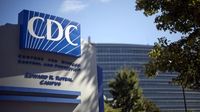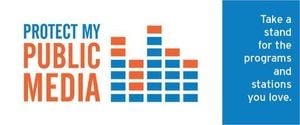Hundreds of federal employees working in mental health services, disease control, and disaster preparedness found themselves at the center of a sweeping reduction-in-force (RIF) initiative launched by the Trump administration over the weekend, as reported by the Associated Press and NOTUS. The mass layoffs, which began on Friday, October 10, 2025, were timed to increase pressure on Democratic lawmakers to resolve the nearly two-week-long government shutdown. But the resulting confusion, especially at the Centers for Disease Control and Prevention (CDC), left both current and former staff reeling and raised serious concerns about the nation’s ability to respond to public health threats.
The U.S. Department of Health and Human Services (HHS), the parent agency overseeing the CDC, Substance Abuse and Mental Health Services Administration (SAMHSA), and the Administration for Strategic Preparedness and Response (ASPR), was hit especially hard. According to a Friday court filing from the Trump administration, roughly 1,100 to 1,200 of HHS’s nearly 80,000 staffers received dismissal notices. Yet, the process was anything but smooth. As the American Federation of Government Employees (AFGE) Local 2883, which represents CDC employees in Atlanta, told the Associated Press, more than half of the CDC staff who received layoff notices—about 700 out of 1,300—later learned these were sent in error and were still employed.
“These reckless actions are disrupting and destroying the lives of everyday working people, who are constantly being used as bargaining chips,” AFGE President Yolanda Jacobs said in a statement on Monday. She described the layoffs as a “politically-motivated stunt” that illegally targeted agency workers. The AFGE’s frustration was echoed by many within the CDC, especially those who were initially told they were out of a job, only to be reinstated days later.
Among those caught in the crossfire were the CDC’s Epidemic Intelligence Service (EIS) officers, known as the agency’s “disease detectives.” These professionals are often deployed to the frontlines of disease outbreaks, risking their own safety to protect public health. Dr. Anne Schuchat, former principal deputy director of the CDC, shared her concern with the Associated Press: “These are people who go into really scary places. Usually you think it’s nature that’s going to be giving you a hard time, the viruses, not the government.”
The confusion was not limited to the CDC. SAMHSA, the federal agency dedicated to addressing mental illness and addiction, also saw significant cuts. Two employees with knowledge of the layoffs told the Associated Press that SAMHSA’s Office of Communications and the Center for Mental Health Services (CMHS) were among the departments affected. Within CMHS, one of two branches overseeing millions in grants for community health clinics was largely terminated. Dakota Jablon, a public health analyst and former SAMHSA employee, warned, “Even if the grants continue, the loss of experienced staff means those who remain will be stretched far too thin, often outside their areas of expertise.” Dr. Eric Rafla-Yuan, chair of the Committee to Protect Public Mental Health, added that the cuts could jeopardize state safety nets for people with mental illness, since SAMHSA is a major funder of such programs.
The layoffs at the CDC extended beyond disease response teams. According to NOTUS, staff at the Office of Safety, Security and Asset Management (OSSAM) were also let go. This division includes the WorkLife Wellness Office and the Occupational Health and Safety Office, both of which play a crucial role in supporting the mental health and safety of CDC employees—an especially sensitive matter in the wake of a deadly shooting at CDC’s Atlanta headquarters in August 2025. The attack left one police officer dead, traumatized employees, and the shooter dead by suicide. The shooter reportedly believed he had been harmed by the COVID-19 vaccine, a claim that Health Secretary Robert F. Kennedy Jr. has repeatedly questioned. In an August email to CDC staff reviewed by NOTUS, Kennedy wrote that the shooting was a “reminder of the very human challenges public servants sometimes face.”
For many at the CDC, the layoffs in OSSAM felt like a particularly cruel blow. “OSSAM is particularly unsettling given that they are safety and asset management who supply us with updates about the state of campus after the shooting and basically anything regarding safety on campus,” a CDC employee told NOTUS. The union representing CDC workers said that the WorkLife Wellness Office, which had provided mental health support services for employees coping with the aftermath of the shooting, was now reduced to a “skeleton crew containing Commissioned Corps officers.” The full scope of the cuts at OSSAM remains unclear, as CDC officials have not responded to detailed questions about the layoffs.
According to an HHS official’s email reviewed by NOTUS, the CDC lost a total of 596 personnel in last week’s RIFs. As of Monday, October 13, 2025, about 600 CDC workers remained fired, with approximately 700 having their termination notices revoked, as confirmed by the Associated Press. The layoffs were part of a broader trend: HHS had already seen thousands of researchers, scientists, doctors, support staff, and senior leaders leave through layoffs, early retirements, or voluntary separation offers just six months prior. Before the government shutdown, HHS staff stood at just under 80,000—down by more than 2,000 from earlier in the year.
These drastic reductions are tied to Health Secretary Robert F. Kennedy Jr.’s ongoing effort to restructure HHS. His plan, which has faced delays due to legislative and congressional pushback, aims to consolidate agencies that oversee billions in funding for addiction services and community health centers under a new office called the Administration for a Healthy America. HHS spokesperson Andrew Nixon defended the layoffs, stating that those dismissed were deemed nonessential and that the agency is working to “close wasteful and duplicative entities, including those that are at odds with the Trump administration’s Make America Healthy Again agenda.” Nixon declined to specify which agencies were hit hardest or provide a detailed breakdown of the affected staff.
For those on the ground, however, the impact is anything but abstract. The loss of experienced professionals in mental health, public health, and safety roles comes at a time when the nation is still grappling with the aftermath of a traumatic shooting, ongoing public health threats, and a government shutdown that has already left many disconnected from their work. As former SAMHSA employee Dakota Jablon put it, the “devastating ripple effects” of these cuts will be felt across the behavioral health field and beyond.
As the dust settles from this chaotic round of layoffs, many are left wondering how the nation’s public health infrastructure will cope with fewer hands on deck and whether the agencies tasked with protecting Americans can fulfill their mandates under such strained conditions. For now, uncertainty and anxiety linger among those who remain—and those who have been pushed out.




